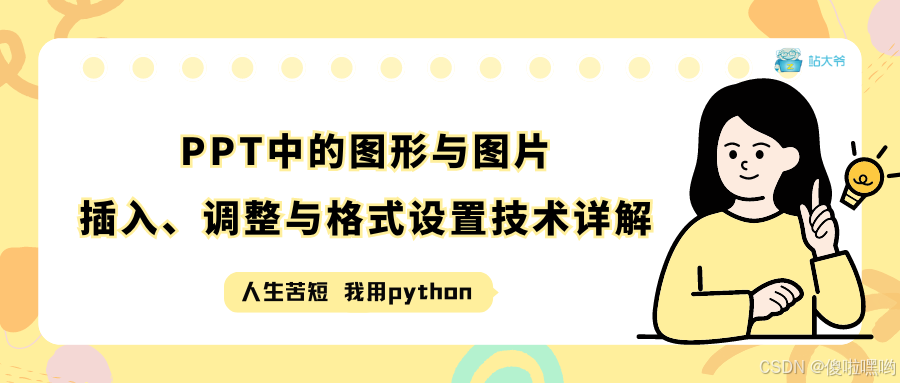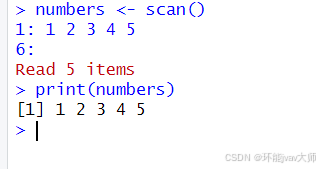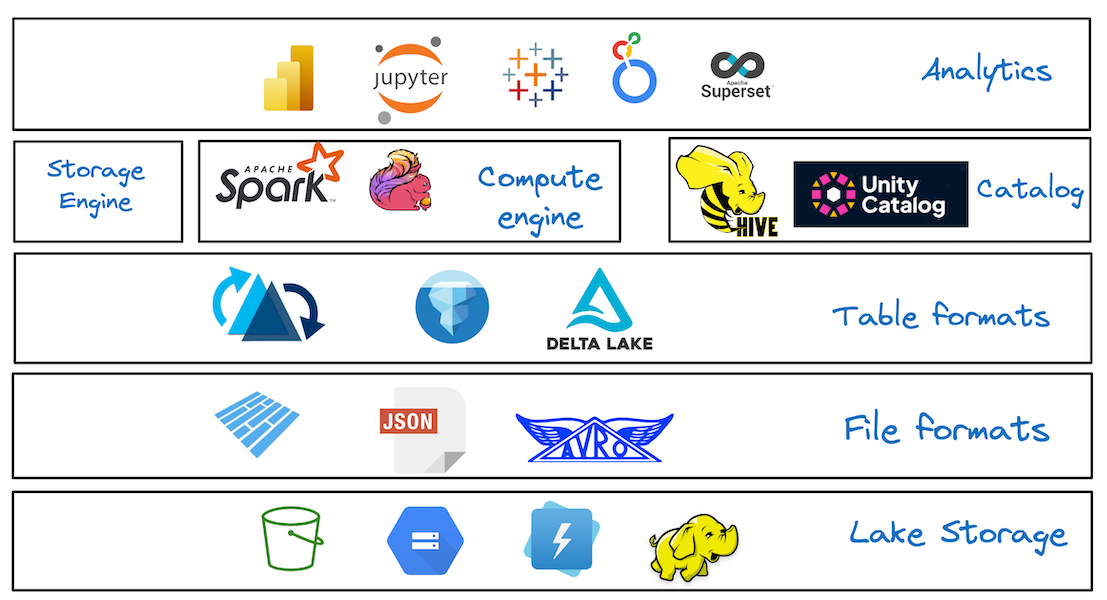文章目录
- 前言
- 1. 粘包
- 造成粘包的原因
- 解决粘包的方法
- 2. 半包
- 造成半包的原因
- 解决半包的方法
- 粘包现象
- 服务端代码示例
- 客户端代码示例
- 半包现象
- 现象分析
- 粘包
- 半包
- 滑动窗口
- MSS 限制
- Nagle 算法
前言
粘包和半包问题是网络编程中常见的问题,特别是在TCP协议中。通过合理的设计和实现,比如使用消息头、特殊分隔符或协议定义等方法,可以有效地解决这些问题。
1. 粘包
“粘包”指的是在网络传输过程中,发送方连续发送的多个数据包在接收方看来像是一个连续的数据流,无法区分这些数据包的边界。这种情况通常发生在TCP协议中,因为TCP是一个面向连接的、可靠的数据流传输协议,它不保证发送的数据包一定会按原来的方式到达接收方。
造成粘包的原因
发送方快速发送:如果发送方快速连续发送多个数据包,而接收方的接收缓冲区不足以区分这些数据包,就可能发生粘包现象。
接收方处理缓慢:如果接收方处理数据的速度慢于发送方发送数据的速度,也可能导致粘包。
网络拥塞:在网络拥塞的情况下,数据包可能会被合并成更大的数据块进行传输。
解决粘包的方法
定长分隔:发送固定长度的消息。这种方式简单但不够灵活。
消息头:在消息前加上消息长度的描述,接收方根据长度来确定消息的边界。
特殊分隔符:在消息末尾加上特定的分隔符(如 \n 或其他特殊字符),接收方根据分隔符来判断消息的结束。
心跳包:定期发送心跳包来同步发送方和接收方的状态,确保数据包的正确接收。
协议定义:明确消息的格式和边界,例如使用特定的帧格式(如HTTP/2、MQTT等)。
2. 半包
“半包”指的是在接收方收到的数据包不完整,即接收到的数据包只包含了一个完整消息的一部分。这种情况通常是由于接收方的接收缓冲区不足以容纳整个消息导致的。
造成半包的原因
接收缓冲区不足:如果接收方的接收缓冲区太小,不足以一次接收完整的消息,就会出现半包现象。
网络延迟:在网络延迟较高的情况下,数据包的到达时间不一致,可能导致接收方未能及时接收到后续的数据包。
解决半包的方法
消息头:类似于解决粘包的方法,通过消息头来确定消息的长度,从而判断是否接收到完整的消息。
重发机制:如果接收方发现消息不完整,可以请求发送方重新发送缺失的部分。
累积接收:接收方可以累积接收到的数据,直到接收到完整的消息为止。
超时机制:设置合理的超时时间,如果在超时时间内未能接收到完整的消息,则可以判定消息丢失或不完整。
粘包现象
服务端代码示例
public class HelloWorldServer {static final Logger log = LoggerFactory.getLogger(HelloWorldServer.class);void start() {NioEventLoopGroup boss = new NioEventLoopGroup(1);NioEventLoopGroup worker = new NioEventLoopGroup();try {ServerBootstrap serverBootstrap = new ServerBootstrap();serverBootstrap.channel(NioServerSocketChannel.class);serverBootstrap.group(boss, worker);serverBootstrap.childHandler(new ChannelInitializer<SocketChannel>() {@Overrideprotected void initChannel(SocketChannel ch) throws Exception {ch.pipeline().addLast(new LoggingHandler(LogLevel.DEBUG));ch.pipeline().addLast(new ChannelInboundHandlerAdapter() {@Overridepublic void channelActive(ChannelHandlerContext ctx) throws Exception {log.debug("connected {}", ctx.channel());super.channelActive(ctx);}@Overridepublic void channelInactive(ChannelHandlerContext ctx) throws Exception {log.debug("disconnect {}", ctx.channel());super.channelInactive(ctx);}});}});ChannelFuture channelFuture = serverBootstrap.bind(8080);log.debug("{} binding...", channelFuture.channel());channelFuture.sync();log.debug("{} bound...", channelFuture.channel());channelFuture.channel().closeFuture().sync();} catch (InterruptedException e) {log.error("server error", e);} finally {boss.shutdownGracefully();worker.shutdownGracefully();log.debug("stoped");}}public static void main(String[] args) {new HelloWorldServer().start();}
}
客户端代码示例
客户端代码希望发送 10 个消息,每个消息是 16 字节
public class HelloWorldClient {static final Logger log = LoggerFactory.getLogger(HelloWorldClient.class);public static void main(String[] args) {NioEventLoopGroup worker = new NioEventLoopGroup();try {Bootstrap bootstrap = new Bootstrap();bootstrap.channel(NioSocketChannel.class);bootstrap.group(worker);bootstrap.handler(new ChannelInitializer<SocketChannel>() {@Overrideprotected void initChannel(SocketChannel ch) throws Exception {log.debug("connetted...");ch.pipeline().addLast(new ChannelInboundHandlerAdapter() {//在连接channel建立成功后,就会触发active事件@Overridepublic void channelActive(ChannelHandlerContext ctx) throws Exception {log.debug("sending...");Random r = new Random();char c = 'a';for (int i = 0; i < 10; i++) {ByteBuf buffer = ctx.alloc().buffer();buffer.writeBytes(new byte[]{0, 1, 2, 3, 4, 5, 6, 7, 8, 9, 10, 11, 12, 13, 14, 15});ctx.writeAndFlush(buffer);}}});}});ChannelFuture channelFuture = bootstrap.connect("127.0.0.1", 8080).sync();channelFuture.channel().closeFuture().sync();} catch (InterruptedException e) {log.error("client error", e);} finally {worker.shutdownGracefully();}}
}
服务器端的某次输出,可以看到一次就接收了 160 个字节,而非分 10 次接收
08:24:46 [DEBUG] [main] c.i.n.HelloWorldServer - [id: 0x81e0fda5] binding...
08:24:46 [DEBUG] [main] c.i.n.HelloWorldServer - [id: 0x81e0fda5, L:/0:0:0:0:0:0:0:0:8080] bound...
08:24:55 [DEBUG] [nioEventLoopGroup-3-1] i.n.h.l.LoggingHandler - [id: 0x94132411, L:/127.0.0.1:8080 - R:/127.0.0.1:58177] REGISTERED
08:24:55 [DEBUG] [nioEventLoopGroup-3-1] i.n.h.l.LoggingHandler - [id: 0x94132411, L:/127.0.0.1:8080 - R:/127.0.0.1:58177] ACTIVE
08:24:55 [DEBUG] [nioEventLoopGroup-3-1] c.i.n.HelloWorldServer - connected [id: 0x94132411, L:/127.0.0.1:8080 - R:/127.0.0.1:58177]
08:24:55 [DEBUG] [nioEventLoopGroup-3-1] i.n.h.l.LoggingHandler - [id: 0x94132411, L:/127.0.0.1:8080 - R:/127.0.0.1:58177] READ: 160B+-------------------------------------------------+| 0 1 2 3 4 5 6 7 8 9 a b c d e f |
+--------+-------------------------------------------------+----------------+
|00000000| 00 01 02 03 04 05 06 07 08 09 0a 0b 0c 0d 0e 0f |................|
|00000010| 00 01 02 03 04 05 06 07 08 09 0a 0b 0c 0d 0e 0f |................|
|00000020| 00 01 02 03 04 05 06 07 08 09 0a 0b 0c 0d 0e 0f |................|
|00000030| 00 01 02 03 04 05 06 07 08 09 0a 0b 0c 0d 0e 0f |................|
|00000040| 00 01 02 03 04 05 06 07 08 09 0a 0b 0c 0d 0e 0f |................|
|00000050| 00 01 02 03 04 05 06 07 08 09 0a 0b 0c 0d 0e 0f |................|
|00000060| 00 01 02 03 04 05 06 07 08 09 0a 0b 0c 0d 0e 0f |................|
|00000070| 00 01 02 03 04 05 06 07 08 09 0a 0b 0c 0d 0e 0f |................|
|00000080| 00 01 02 03 04 05 06 07 08 09 0a 0b 0c 0d 0e 0f |................|
|00000090| 00 01 02 03 04 05 06 07 08 09 0a 0b 0c 0d 0e 0f |................|
+--------+-------------------------------------------------+----------------+
08:24:55 [DEBUG] [nioEventLoopGroup-3-1] i.n.h.l.LoggingHandler - [id: 0x94132411, L:/127.0.0.1:8080 - R:/127.0.0.1:58177] READ COMPLETE
半包现象
客户端代码希望发送 1 个消息,这个消息是 160 字节,代码改为
public class HelloWorldClient {static final Logger log = LoggerFactory.getLogger(HelloWorldClient.class);public static void main(String[] args) {NioEventLoopGroup worker = new NioEventLoopGroup();try {Bootstrap bootstrap = new Bootstrap();bootstrap.channel(NioSocketChannel.class);bootstrap.group(worker);bootstrap.handler(new ChannelInitializer<SocketChannel>() {@Overrideprotected void initChannel(SocketChannel ch) throws Exception {log.debug("connetted...");ch.pipeline().addLast(new ChannelInboundHandlerAdapter() {//在连接channel建立成功后,就会触发active事件@Overridepublic void channelActive(ChannelHandlerContext ctx) throws Exception {log.debug("sending...");Random r = new Random();char c = 'a';for (int i = 0; i < 10; i++) {ByteBuf buffer = ctx.alloc().buffer(16);
// ByteBuf buffer = ctx.alloc().buffer();buffer.writeBytes(new byte[]{0, 1, 2, 3, 4, 5, 6, 7, 8, 9, 10, 11, 12, 13, 14, 15});ctx.writeAndFlush(buffer);}}});}});ChannelFuture channelFuture = bootstrap.connect("127.0.0.1", 8080).sync();channelFuture.channel().closeFuture().sync();} catch (InterruptedException e) {log.error("client error", e);} finally {worker.shutdownGracefully();}}
}
为现象明显,服务端修改一下接收缓冲区,其它代码不变
public class HelloWorldServer {static final Logger log = LoggerFactory.getLogger(HelloWorldServer.class);void start() {NioEventLoopGroup boss = new NioEventLoopGroup(1);NioEventLoopGroup worker = new NioEventLoopGroup();try {ServerBootstrap serverBootstrap = new ServerBootstrap();serverBootstrap.channel(NioServerSocketChannel.class);//配置接受缓冲区为10字节,观察客户端发送数据时出现的黏包半包问题serverBootstrap.option(ChannelOption.SO_RCVBUF,10);serverBootstrap.group(boss, worker);serverBootstrap.childHandler(new ChannelInitializer<SocketChannel>() {@Overrideprotected void initChannel(SocketChannel ch) throws Exception {ch.pipeline().addLast(new LoggingHandler(LogLevel.DEBUG));
// ch.pipeline().addLast(new ChannelInboundHandlerAdapter() {
// @Override
// public void channelActive(ChannelHandlerContext ctx) throws Exception {
// log.debug("connected {}", ctx.channel());
// super.channelActive(ctx);
// }
//
// @Override
// public void channelInactive(ChannelHandlerContext ctx) throws Exception {
// log.debug("disconnect {}", ctx.channel());
// super.channelInactive(ctx);
// }
// });}});ChannelFuture channelFuture = serverBootstrap.bind(8080);log.debug("{} binding...", channelFuture.channel());channelFuture.sync();log.debug("{} bound...", channelFuture.channel());channelFuture.channel().closeFuture().sync();} catch (InterruptedException e) {log.error("server error", e);} finally {boss.shutdownGracefully();worker.shutdownGracefully();log.debug("stoped");}}public static void main(String[] args) {new HelloWorldServer().start();}
}
服务器端的某次输出,可以看到接收的消息被分为两节,第一次 20 字节,第二次 140 字节
08:43:49 [DEBUG] [main] c.i.n.HelloWorldServer - [id: 0x4d6c6a84] binding...
08:43:49 [DEBUG] [main] c.i.n.HelloWorldServer - [id: 0x4d6c6a84, L:/0:0:0:0:0:0:0:0:8080] bound...
08:44:23 [DEBUG] [nioEventLoopGroup-3-1] i.n.h.l.LoggingHandler - [id: 0x1719abf7, L:/127.0.0.1:8080 - R:/127.0.0.1:59221] REGISTERED
08:44:23 [DEBUG] [nioEventLoopGroup-3-1] i.n.h.l.LoggingHandler - [id: 0x1719abf7, L:/127.0.0.1:8080 - R:/127.0.0.1:59221] ACTIVE
08:44:23 [DEBUG] [nioEventLoopGroup-3-1] c.i.n.HelloWorldServer - connected [id: 0x1719abf7, L:/127.0.0.1:8080 - R:/127.0.0.1:59221]
08:44:24 [DEBUG] [nioEventLoopGroup-3-1] i.n.h.l.LoggingHandler - [id: 0x1719abf7, L:/127.0.0.1:8080 - R:/127.0.0.1:59221] READ: 20B+-------------------------------------------------+| 0 1 2 3 4 5 6 7 8 9 a b c d e f |
+--------+-------------------------------------------------+----------------+
|00000000| 00 01 02 03 04 05 06 07 08 09 0a 0b 0c 0d 0e 0f |................|
|00000010| 00 01 02 03 |.... |
+--------+-------------------------------------------------+----------------+
08:44:24 [DEBUG] [nioEventLoopGroup-3-1] i.n.h.l.LoggingHandler - [id: 0x1719abf7, L:/127.0.0.1:8080 - R:/127.0.0.1:59221] READ COMPLETE
08:44:24 [DEBUG] [nioEventLoopGroup-3-1] i.n.h.l.LoggingHandler - [id: 0x1719abf7, L:/127.0.0.1:8080 - R:/127.0.0.1:59221] READ: 140B+-------------------------------------------------+| 0 1 2 3 4 5 6 7 8 9 a b c d e f |
+--------+-------------------------------------------------+----------------+
|00000000| 04 05 06 07 08 09 0a 0b 0c 0d 0e 0f 00 01 02 03 |................|
|00000010| 04 05 06 07 08 09 0a 0b 0c 0d 0e 0f 00 01 02 03 |................|
|00000020| 04 05 06 07 08 09 0a 0b 0c 0d 0e 0f 00 01 02 03 |................|
|00000030| 04 05 06 07 08 09 0a 0b 0c 0d 0e 0f 00 01 02 03 |................|
|00000040| 04 05 06 07 08 09 0a 0b 0c 0d 0e 0f 00 01 02 03 |................|
|00000050| 04 05 06 07 08 09 0a 0b 0c 0d 0e 0f 00 01 02 03 |................|
|00000060| 04 05 06 07 08 09 0a 0b 0c 0d 0e 0f 00 01 02 03 |................|
|00000070| 04 05 06 07 08 09 0a 0b 0c 0d 0e 0f 00 01 02 03 |................|
|00000080| 04 05 06 07 08 09 0a 0b 0c 0d 0e 0f |............ |
+--------+-------------------------------------------------+----------------+
08:44:24 [DEBUG] [nioEventLoopGroup-3-1] i.n.h.l.LoggingHandler - [id: 0x1719abf7, L:/127.0.0.1:8080 - R:/127.0.0.1:59221] READ COMPLETE
注意 serverBootstrap.option(ChannelOption.SO_RCVBUF, 10) 影响的底层接收缓冲区(即滑动窗口)大小,仅决定了 netty 读取的最小单位,netty 实际每次读取的一般是它的整数倍
现象分析
粘包
- 现象,发送 abc def,接收 abcdef
- 原因
- 应用层:接收方 ByteBuf 设置太大(Netty 默认 1024)
- 滑动窗口:假设发送方 256 bytes 表示一个完整报文,但由于接收方处理不及时且窗口大小足够大,这 256 bytes 字节就会缓冲在接收方的滑动窗口中,当滑动窗口中缓冲了多个报文就会粘包
- Nagle 算法:会造成粘包(因为tcp和ip的报头要分别占用20个字节,所以就算发送一个字节,那么总共也要发送41个字节,所以使用粘包来减少发送次数,尽可能多的发送数据)
半包
- 现象,发送 abcdef,接收 abc def
- 原因
- 应用层:接收方 ByteBuf 小于实际发送数据量
- 滑动窗口:假设接收方的窗口只剩了 128 bytes,发送方的报文大小是 256 bytes,这时放不下了,只能先发送前 128 bytes,等待 ack 后才能发送剩余部分,这就造成了半包
- MSS 限制:当发送的数据超过 MSS 限制后,会将数据切分发送,就会造成半包
本质是因为 TCP 是流式协议,消息无边界
滑动窗口
- TCP 以一个段(segment)为单位,每发送一个段就需要进行一次确认应答(ack)处理,但如果这么做,缺点是包的往返时间越长性能就越差

为了解决此问题,引入了窗口概念,窗口大小即决定了无需等待应答而可以继续发送的数据最大值

图中窗口大小可以同时发送四个请求,当第一个请求响应后窗口向下移动,第五个请求才可以发送,第二个请求响应后窗口下移,第六个请求发送。
窗口实际就起到一个缓冲区的作用,同时也能起到流量控制的作用 - 图中深色的部分即要发送的数据,高亮的部分即窗口
- 窗口内的数据才允许被发送,当应答未到达前,窗口必须停止滑动
- 如果 1001~2000 这个段的数据 ack 回来了,窗口就可以向前滑动
- 接收方也会维护一个窗口,只有落在窗口内的数据才能允许接收
MSS 限制
- 链路层对一次能够发送的最大数据有限制,这个限制称之为 MTU(maximum transmission unit),不同的链路设备的 MTU 值也有所不同,例如
- 以太网的 MTU 是 1500
- FDDI(光纤分布式数据接口)的 MTU 是 4352
- 本地回环地址的 MTU 是 65535 - 本地测试不走网卡
- MSS 是最大段长度(maximum segment size),它是 MTU 刨去 tcp 头和 ip 头后剩余能够作为数据传输的字节数
- ipv4 tcp 头占用 20 bytes,ip 头占用 20 bytes,因此以太网 MSS 的值为 1500 - 40 = 1460
- TCP 在传递大量数据时,会按照 MSS 大小将数据进行分割发送
- MSS 的值在三次握手时通知对方自己 MSS 的值,然后在两者之间选择一个小值作为 MSS

Nagle 算法
- 即使发送一个字节,也需要加入 tcp 头和 ip 头,也就是总字节数会使用 41 bytes,非常不经济。因此为了提高网络利用率,tcp 希望尽可能发送足够大的数据,这就是 Nagle 算法产生的缘由
- 该算法是指发送端即使还有应该发送的数据,但如果这部分数据很少的话,则进行延迟发送
- 如果 SO_SNDBUF 的数据达到 MSS,则需要发送
- 如果 SO_SNDBUF 中含有 FIN(表示需要连接关闭)这时将剩余数据发送,再关闭
- 如果 TCP_NODELAY = true,则需要发送
- 已发送的数据都收到 ack 时,则需要发送
- 上述条件不满足,但发生超时(一般为 200ms)则需要发送
- 除上述情况,延迟发送
![[Postman]接口自动化测试入门](https://i-blog.csdnimg.cn/direct/5b5c708fe10749c2927f7325c9214f57.png)


















